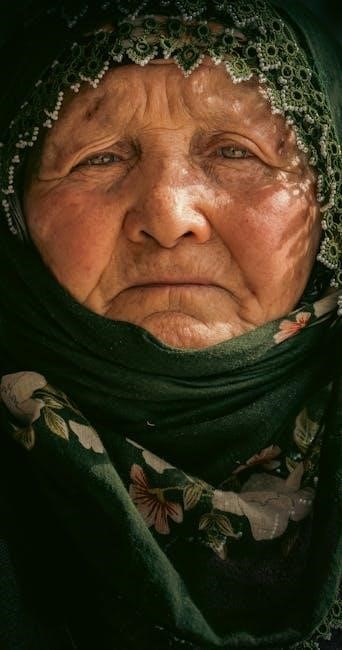The local binary pattern is a texture analysis method used in
image processing
to describe the local structure of an image, providing a powerful tool for various applications, including face recognition and object detection systems naturally.
Definition and Explanation
The local binary pattern is a method used to describe the texture of an image, it works by comparing each pixel with its neighboring pixels and assigning a binary code based on the comparison. This binary code is then used to create a histogram that describes the texture of the image. The local binary pattern is a powerful tool for image processing and analysis, it is widely used in various applications such as face recognition, object detection, and image classification.
The local binary pattern is defined as a grayscale invariant texture measure, it is invariant to monotonic gray scale transformations, this means that the pattern remains the same even if the gray scale of the image is changed.
This property makes the local binary pattern a robust method for texture analysis, it can be used to analyze images with varying lighting conditions and it is not affected by changes in the gray scale of the image.
The local binary pattern is a simple and efficient method, it can be computed quickly and it does not require complex computations, this makes it a suitable method for real-time image processing applications.
Overall, the local binary pattern is a powerful tool for image processing and analysis, it provides a robust and efficient method for texture analysis and it is widely used in various applications.

Types of Local Binary Patterns
Local binary patterns are categorized into different types, including rotation invariant and uniform patterns, used in image processing and analysis, providing various applications naturally every day.
Complete Local Binary Pattern
The complete local binary pattern is an extension of the local binary pattern operator, which considers both the sign and magnitude of the local image texture, providing a more comprehensive description of the image structure.
This approach is based on the idea that the local binary pattern operator only considers the sign of the local image texture, which may not be sufficient to describe the image structure accurately.
By considering both the sign and magnitude of the local image texture, the complete local binary pattern operator can provide a more detailed description of the image structure, which can be useful in various image processing and analysis applications.

The complete local binary pattern operator has been shown to be effective in various applications, including image classification and object recognition, and has been used in various fields, including computer vision and image processing.
Overall, the complete local binary pattern is a powerful tool for image processing and analysis, and can be used in a variety of applications where a detailed description of the image structure is required.

Uniform Local Binary Patterns
Reasons for Omitting Non-Uniform Patterns
The local binary pattern operator is often used with uniform patterns, as they provide a more efficient and effective way to describe image textures. According to research, most natural images contain a high percentage of uniform patterns, with around 90% of patterns in texture images being uniform. This is also true for facial images, where around 90.6% of patterns in the (8, 1) neighborhood and 85.2% in the (8, 2) neighborhood are uniform. Using only uniform patterns can significantly reduce the dimensionality of the feature space, making it more suitable for real-time applications. The use of uniform patterns also helps to improve the robustness of the local binary pattern operator to noise and other variations. By omitting non-uniform patterns, the operator can focus on the most important and informative patterns, leading to better performance in various applications. This is particularly important in image and video analysis, where efficient and effective feature extraction is crucial. Overall, the use of uniform patterns is a key aspect of the local binary pattern operator, enabling it to provide a powerful and efficient way to describe and analyze image textures.

Applications of Local Binary Pattern
Local binary pattern is used in various applications, including
image and video analysis
for object detection and recognition systems naturally always.
Face Description and Feature Histogram
The local binary pattern operator is widely used in face description and feature histogram applications, providing a powerful tool for face recognition systems.
By dividing the face image into small regions, the local binary pattern operator can extract the local features of each region, which are then combined to form a feature histogram.
This feature histogram can be used to describe the face image, allowing for efficient and accurate face recognition.
The local binary pattern operator has been shown to be robust to variations in lighting and pose, making it a popular choice for face recognition applications.
In addition, the local binary pattern operator can be used in conjunction with other feature extraction methods to improve the accuracy of face recognition systems.
Overall, the local binary pattern operator is a useful tool for face description and feature histogram applications, and has been widely used in various face recognition systems.
The feature histogram provides a compact and efficient representation of the face image, allowing for fast and accurate face recognition.
The local binary pattern operator has been successfully applied to various face recognition tasks, including face verification and face identification.
